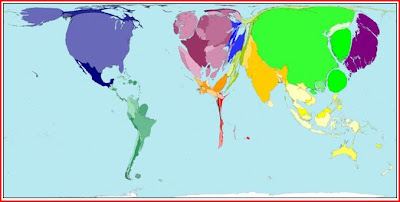Joe Stiglitz disects the Geither Plan and finds it lacking.
The government plan in effect involves insuring almost all losses. Since the private investors are spared most losses, then they primarily “value” their potential gains. This is exactly the same as being given an option.
Consider an asset that has a 50-50 chance of being worth either zero or $200 in a year’s time. The average “value” of the asset is $100. Ignoring interest, this is what the asset would sell for in a competitive market. It is what the asset is “worth.” Under the plan by Treasury Secretary Timothy Geithner, the government would provide about 92 percent of the money to buy the asset but would stand to receive only 50 percent of any gains, and would absorb almost all of the losses. Some partnership!
Assume that one of the public-private partnerships the Treasury has promised to create is willing to pay $150 for the asset. That’s 50 percent more than its true value, and the bank is more than happy to sell. So the private partner puts up $12, and the government supplies the rest — $12 in “equity” plus $126 in the form of a guaranteed loan.
If, in a year’s time, it turns out that the true value of the asset is zero, the private partner loses the $12, and the government loses $138. If the true value is $200, the government and the private partner split the $74 that’s left over after paying back the $126 loan. In that rosy scenario, the private partner more than triples his $12 investment. But the taxpayer, having risked $138, gains a mere $37.
Even in an imperfect market, one shouldn’t confuse the value of an asset with the value of the upside option on that asset.
Stiglitz concisely diagnoses the problem:
The main problem is not a lack of liquidity. If it were, then a far simpler program would work: just provide the funds without loan guarantees. The real issue is that the banks made bad loans in a bubble and were highly leveraged. They have lost their capital, and this capital has to be replaced.
In a recent podcast of EconTalk, Allan Melzer suggested an alternate approach. Have the banks raise the money they need on the open market while Uncle Sam pledges to match the money raised dollar-for-dollar. If a bank can not raise the money they need, they are insolvent, need to be shut down, and sold off. This way, the taxpayer would only be on the hook if a bank has at least one foot on the ground.
The dead wood needs to be cleared out of the system, not piled on the backs of the taxpayer for years to come.














 Wren Library, Trinity College, Cambridge, England
Wren Library, Trinity College, Cambridge, England

























